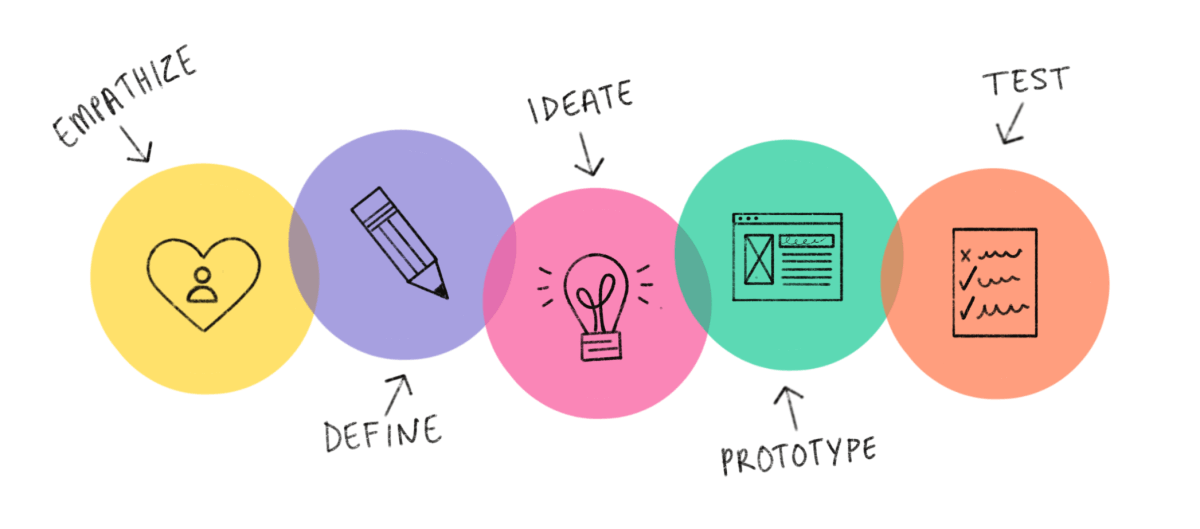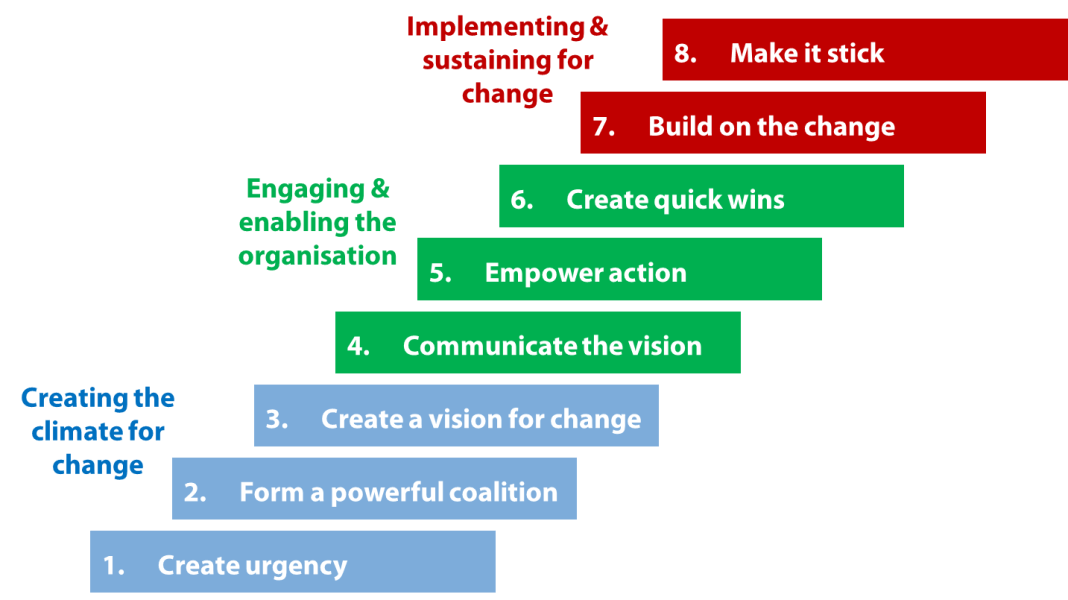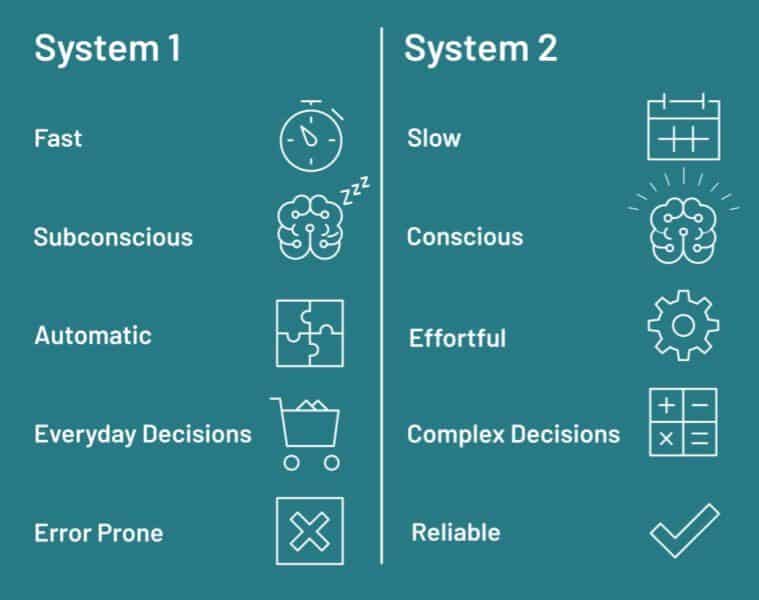
Behaviorally Informed Change Models for Today’s VUCA Environment
This is part 2 in a series on more effective organizational change management with insights from behavioral psychology and neuroscience. In our first article you might have read what organizational change management is, what it looks like, and how behavioral insights add value. This article focuses on models and frameworks you can use for behaviorally informed change.
*VUCA = Volatile, Uncertain, Complex, Ambiguous

As we have seen, organizational change is complex and sometimes very challenging. That is why models and frameworks are so useful: they help you navigate difficult situations by relying on the codified knowledge and experience of those who came before us. More importantly yet, models also allow you to experiment with and improve the model itself. Models can also help communicate your thoughts and ideas in organization.
Over the last three decades, psychologists and neuroscientists have repeatedly demonstrated that our decisions and behavior tend to be predictably irrational. New models were developed and slowly found their way into the world of business. In this article, we will share some of the behavioral models we most often use at Neurofied in managing organizational change.
This article is a tribute to Paul Gibbons, a leading change management professional and author. His books The Science of Organizational Change and Impact are highly recommended reading for any change management professional.
You will find many practical, evidence-based tools and answers to the following questions:
- What change models are widely used?
- Are these models relevant for today’s VUCA environment?
- Which behavioral models can update your change management models?
- How and when can you leverage these science-backed tools yourself?
What change models are widely used?
Like most disciplines, change management has many models but few have stood the test of time and are widely used (in the case of Lewin’s model, used mainly as a mental model). There are three models that we will very briefly discuss here so you have an idea of what guidance these three provide.
- Lewin’s Unfreeze-Change-Refreeze (1940)
- Design Thinking (1991)
- Kotter’s 8 steps (1992)
Why use models in the first place? Models are useful tools which can be used to improve explanations, facilitate communication, generate discussion, make predictions, provide visual representations of abstract concepts and generate mental models to work with.
Unfreeze-Change-Refreeze
Kurt Lewin’s change model has three stages:
- Unfreeze: the goal is to prepare for change by deciding on a course, ensuring support, creating a need to change, and managing any concerns.
- Change: the goal is to transition people to the new state of being by communicating, dispelling rumors, empowering and driving action.
- Refreeze: the goal is to establish stability by anchoring and sustaining the change, supporting and training people, and celebrating successes.

Although this model originated 80+ years ago and holds little practical value in today’s complex world, it is still a useful mental model when thinking about change projects. Today, the frozen state probably resembles a milkshake more than an ice cube. And whereas this model suggests that after refreezing you’re fine for a while, the VUCA model we discuss below, questions this assumption.
Design Thinking
The Design Thinking model has a human-centered core encouraging organizations to focus on the people they’re creating for, which leads to better products, services, and internal processes. The model features five steps which we have simplified for the context of organizational change management:
- Empathize: the goal is to gain a deep, human-centric understanding of how the proposed change will impact people positively and negatively.
- Define: the goal is to analyze and integrate all observations from phase 1 and clearly define the problem statement or change vision
- Ideate: the goal is to brainstorm ideas on how to make the change positive, successful, and lasting while remaining human-centric.
- Prototype: the goal is to design experiments that could validate specific change strategy elements to weed out the biggest potential pitfalls.
- Test: the goal is to continually test while implementing the change and adapt the strategy based on stakeholder feedback and performance metrics.

Notice that each step is very goal oriented. You might have come across design thinking from other business areas such as product development, customer feedback, and innovation but this framework is well-suited for organizational change. This might be one of the most human-centric approaches as it starts with empathy and builds everything around the gained insights.
Kotter’s 8 steps
The eight steps of Kotter are broadly divided into three phases:
- Create a sense of urgency
- Form a powerful coalition
- Create a vision for change
- Communicate the vision
- Empower action
- Create quick wins
- Build on the change
- Make the change stick

This is probably the most widely used change model covering a lot of ground. Most heard critiques are that there is enough urgency in today’s information-overwhelming world and that there is too little attention on the hardest part of OCM: actual adoption of the change.
How relevant are these models in today’s VUCA environment?
All three models, Unfreeze-Freeze-Refreeze, Design Thinking, and Kotter’s 8 steps , contain timeless principles of organizational change. They are still relevant but it’s hard to ignore that each of these models was created between 30 and 80 years ago in a world where the paradigms around what causes human and organizational behavior were different. Even if most basic human behavior is hardwired.
How can we even try to describe the characteristics of today’s fast-paced, connected world? One science-backed way would be to say this world is VUCA. This acronym stands for the Volatile, Uncertain, Complex, and Ambiguous environment we humans live and operate in.
VUCA is important because it directly affects the usefulness of any model you are going to use. The reason we build and use models for change in the first place, is to help us get insights in, predict and anticipate future situations by using available and relevant information.
Unfortunately, the faster the real world changes, the less reliable models will become (especially in Social science). Volatility, uncertainty, complexity, and ambiguity are catalysts for this process. The more these elements increase, the less you can rely on models, old and new, because the underlying assumptions might not apply to the current situation anymore.
VUCA sounds terrifying, but it’s actually a framework on its own. VUCA will help you deconstruct unpredictable situations into concrete challenges. Each element of VUCA requires a specific strategy. We plan to publish an entire future article dedicated to applying VUCA but if you want to learn more, VUCA’s Wikipedia page is excellent.
Behaviorally informed change management models
This takes us back to the predictably irrational paradigm. At Neurofied, we can supplement the mentioned change models with science-backed insights from behavioral psychology and neuroscience to increase the reliability and effectiveness of classical change models.
At this moment in time, there are dozens of models from neuroscience, behavioral, cognitive, and social psychology that can provide useful guidance to change managers. To show you the value of leveraging behavioral insights during your change projects, we will discuss three models we often use below.
System 1 & 2
We have dedicated multiple articles to the dual processing theory of Daniel Kahneman and Amos Tversky. There’s a short recap of System 1 & 2 below but if you would like to learn more about this model, we recommend the article Thinking Fast? Slow Down.
We humans have two ways of taking decisions: fast, automatic, and subconscious like when we recognise a voice (system 1) and a slow, deliberate, and conscious process like when you calculate 17 times 24 (system 2). By default, hard wired as we are, we tend to use system 1 more but this is also the mode in which our thinking is more prone to making predictably irrational mistakes (cognitive biases).

There are hundreds of science-backed biases that affect our ability to take decisions and willingness to change. There are plenty of examples in our articles on biases like the Dunning-Kruger effect and Sunk Cost Fallacy, while our Behavioral Economics article focuses on how some of these biases affect organizations and professionals.
For people driving change, it is very useful and probably necessary to know when people are clearly operating in system 1 or 2. This allows you to adapt your communication and process interventions and more effectively manage the situation you are dealing with. This is also an extremely valuable mental model to have ready for analyzing and improving decision-making processes.
B = MAP
Mapping and graphs are also a useful and favorite way to visualize and create insights and transfer knowledge. B = MAP, also known as BJ Fogg’s behavior model from 2007 is a model that describes under which conditions a behavior might take place. Simply explained, a behavior (B) will occur when there is simultaneous Motivation (M), Ability (A), and a Prompt (P). The action line separates the effective from ineffective prompts.
It might seem complex at first but the fundamentals are very straightforward. When a behavioral prompt encourages someone to perform a behavior, they are likely to do so when they are highly motivated (high M) or when it is extremely easy to do (high A).

This model can be applied in many ways by behavioral scientists. We personally use B = MAP in our change projects for purposes ranging from identifying the root cause of why specific behaviors are not shown, to assessing and optimizing the effectiveness of behavioral interventions. The model also functions as a great checklist.
MINDSPACE
The MINDSPACE model was developed by behavioral scientists working inside the UK government to aid the application of behavioral science to the policy-making process. This framework distills strategies for influencing human decisions into a simple acronym and has proved to be broadly applicable, also for the fast-paced world of industry.
MINDSPACE represents the nine forces that drive behavior across a variety of contexts. Understanding these forces and ensuring they work with you and not against you- will go a long way towards effectively driving behavioral change.
- Messenger: We are heavily influenced by who is communicating information
- Incentives: Our responses to incentives are shaped by predictable mental shortcuts
- Norms: We are heavily influenced by what others do
- Defaults: We tend to accept pre-defined default options
- Salience:Our attention is drawn to novel things that seem relevant to us
- Priming: Our actions are often influenced by subconscious cues
- Affect: Our actions can be powerfully shaped by our emotional associations
- Commitments: We seek to be consistent with our public promises and to reciprocate actions
- Ego: We act in ways that make us feel better about ourselves
The MINDSPACE framework can be most effectively leveraged by behavioral scientists but even the most inexperienced change manager can benefit from MINDSPACE using it as a checklist for brainstorming and evaluating key communications and interventions.
How you can leverage these models
I’m proud you made it this far. We had a brief discussion of three change models (Unfreeze-Change-Refreeze, Design Thinking, and Kotter’s 8 steps), the VUCA acronym, and three behavioral models (System 1 & 2, B = MAP, and MINDSPACE).
How did this article strengthen your skills in driving change? You can now…
- use the change models to structure your next change project
- leverage the behavioral models to brainstorm interventions
- use the behavioral models to evaluate and improve communications and interventions through the use of checklists and infographics
- adapt your change strategy and tactics to deal more effectively with this VUCA world
- share the insights of this article with your team to start improving collectively
We hope this article was useful to you and if you’re looking for a behavioral business partner who can drive change in your organization, we’d love to schedule a call or coffee. If you want to learn more about behavioral insights, read our blog or watch 100+ videos on our YouTube channel!
About Neurofied
Neurofied is a behavioral science company specialized in training, consulting, and change management. We help organizations drive evidence-based and human-centric change with insights and interventions from behavioral psychology and neuroscience. Consider us your behavioral business partner who helps you build behavioral change capabilities internally.
Since 2018, we have trained thousands of professionals and worked with over 100 management, HR, growth, and innovation teams of organizations such as Johnson & Johnson, KPMG, Deloitte, Novo Nordisk, ABN AMRO, and the Dutch government. We are also frequent speakers at universities and conferences.
Our mission is to democratize the value of behavioral science for teams and organizations. If you see any opportunities to collaborate, please contact us here.